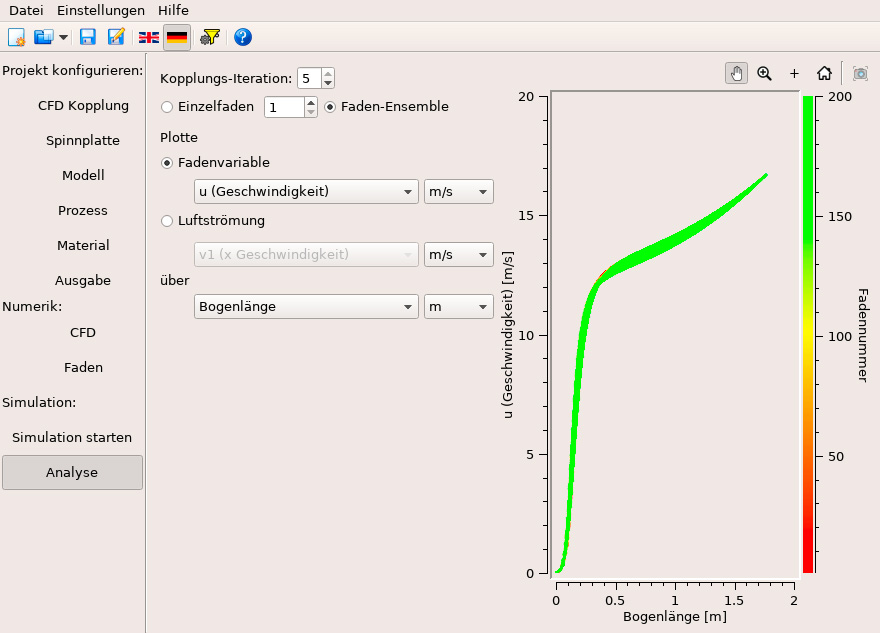Our software tool VISPI simulates stationary, viscous filaments or fibers in flows and originated from a BMBF project of the same name. VISPI is used to model the dynamics of viscous and cross-section-averaged filaments. The software also considers the interactions of the filaments on the flow – both the dynamics and the energy between the filaments and the flow.
Our software tool is used in a wide range of application and it is of particular interest to companies in the construction of textile machines and for the production of technical textiles. This is because it is only through our built-in feedback of the filaments to the flow that VISPI makes it possible to simulate realistic results for industrial applications.
